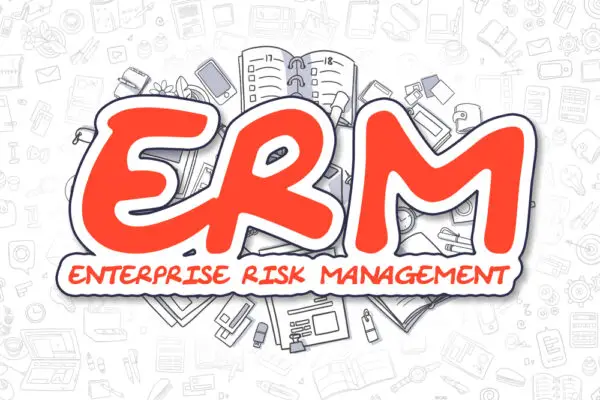Structured products are complex financial instruments that combine investments, such as stocks, bonds, and derivatives, into a single package. These assets can include indices, equities, commodities, interest rates, foreign exchange, or a combination. The products are usually structured to provide a specific risk/reward payoff based on certain conditions or scenarios.
These products generally offer investors access to various investment opportunities that would be difficult to achieve through traditional investments alone.
They can provide customized solutions for investors seeking specific risk-return profiles or exposure to market conditions.
The two critical components of a structured product are:
Zero-Coupon Bond: This serves as the risk-free component of the product. The issuer uses a portion of the investment to purchase a bond that will mature at face value over the investment horizon. This ensures the investor’s principal is protected.
Derivative Component: The issuer uses the remaining investment portion to purchase a derivative product, often options, to provide exposure to an underlying asset or market. This is the risk component of the structured product and where the profit potential comes from.
Types of structured products include:
Principal Protected Notes (PPN): These products guarantee principal returned to the investor while providing equities or an index exposure.
Yield Enhancement Products: These are typically non-principal protected and aim to provide a higher yield than traditional fixed-income products.
Structured Notes with Principal Protection: These offer returns linked to the performance of one or more underlying assets while protecting the principal investment.
Structured Investment Products (SIPs): These products provide returns linked to various market indices, baskets of equities, or other assets. They often provide partial or full protection of the principal investment.
They can provide portfolio diversification and the potential for high returns, but they also come with risks. These can be complex financial instruments, often carrying issuer risk (the risk that the financial institution issuing the product will default).
The products may also lack liquidity, making them difficult to sell before maturity. Therefore, it’s essential to understand the terms and risks of structured products before investing in them.
Despite their popularity, structured products remain primarily misunderstood by many investors.
This article aims to demystify the concept of this instrument by providing an in-depth understanding of what they are, how they work, their advantages and disadvantages, associated risks, and factors determining suitability for individual investors.

Understanding the Basics of Structured Products
Their features can vary widely, from principal protection to enhanced returns, with different payoffs based on the performance of underlying assets.
Structured products have become increasingly popular among individual and institutional investors alike. This trend can be attributed to several factors, including increasing demand for yield-generating investments in a low-interest-rate environment and investors’ desire for downside protection amid market volatility.
Additionally, they allow investors to gain exposure to niche markets or asset classes that may not be accessible through traditional investment vehicles.
It also offers an attractive proposition for investors seeking tailored investment solutions that cater to their unique needs and preferences.
However, it is essential to note that these complex financial instruments have risks and limitations. As such, it is crucial for investors to carefully consider their risk appetite and conduct thorough due diligence before investing in structured products.
Market trends in structured products will continue evolving as market conditions change, making it vital for investors always stay informed about this rapidly growing field.
Types of Structured Products
They are financial instruments that combine traditional investments such as stocks, bonds, or cash with derivative contracts. These products are designed to offer investors a tailored investment option that meets their specific needs in terms of risk and return.
One type of structured product is barrier options. Barrier options are derivative contracts that allow investors to set a price range within which an underlying asset must remain for the option to be valid.
The option becomes worthless if the asset’s value drops below or rises above this range. This feature allows investors to limit their downside risk while benefiting from potential gains.
Another type of structured product is credit-linked notes (CLNs). CLNs are debt securities whose principal and interest payments depend on whether a specified credit event occurs, such as a default by the issuer or another entity.
Investors receive higher interest rates than traditional bonds because they take on additional credit risk associated with the referenced entity.
Barrier options can help limit downside risks while benefiting from potential gains, whereas credit-linked notes offer higher returns but at a higher level of credit risk. Investors should carefully consider their investment objectives and consult financial professionals before investing in any structured product.
Advantages and Disadvantages of Investing in Structured Products
Structured products are often marketed to investors who seek greater returns on their investments than traditional financial instruments offer. However, investors must carefully weigh the pros and cons of structured products before committing to them.
One advantage of structured products is their potential for higher returns than traditional investments. They provide exposure to multiple asset classes, such as stocks, bonds, commodities, or currencies, with varying degrees of risk and reward.
Advantages:
Potential for High Returns: The returns of structured products can exceed those of direct investments in the underlying asset, especially in flat or slightly bearish markets.
Principal Protection: Some structured products offer principal protection, meaning that even if the investment doesn’t perform well, you can still recoup your initial investment at maturity, subject to the credit risk of the issuer.
Customized Payoff Profiles: Structured products can be designed to offer a variety of potential payoff structures to meet specific investment goals or risk tolerance.
Access to a Variety of Underlying Assets: Structured products can be linked to a wide range of underlying assets, including equities, indices, currencies, commodities, and interest rates, allowing investors to gain exposure to markets they might not otherwise invest in.
Diversification: Because they can be linked to various types of assets, structured products can diversify an investment portfolio.
Disadvantages:
Complexity: Structured products can be complex and difficult to understand. The payoff structures can be complicated, and it’s crucial to understand how returns are calculated before investing entirely.
Credit Risk: While some structured products offer principal protection, this is subject to the issuer’s creditworthiness. If the issuer defaults, you may lose some or all of your investment.
Limited Upside Potential: Some structured products cap the maximum return that can be earned, even if the underlying asset or index performs exceptionally well.
Lack of Liquidity: Structured products are often designed to be held to maturity. They can be hard to sell before the maturity date, and if you do need to sell early, you may receive less than your original investment.
Fees and Costs: Structured products often have built-in fees and costs, which can eat into the potential returns. These fees can also make them more expensive than other types of investments.
Furthermore, the customization feature allows investors to tailor their investments to their needs and goals. For instance, if an investor seeks a particular level of downside protection while still being able to participate in market gains beyond a certain threshold level, they can choose a product that offers this type of payoff structure.
On the other hand, structured products have downsides that must be considered before investing. First and foremost is the complexity involved in understanding how they work.
Many structured products use complex financial models that require sophisticated knowledge about derivatives pricing and risk management techniques.
Additionally, these types of investments may not be suitable for all investors due to their high fees or lack of liquidity in secondary markets.
Risks Associated with Structured Products
Structured products, essentially a combination of traditional securities and derivatives, carry inherent risks that investors must be aware of.
One such risk is counterparty risk, which refers to the possibility that the issuer or seller of a structured product may default on its obligations. Investors in structured products also face market risk, which arises from fluctuations in the underlying assets upon which these products are based.
Since many structured products use derivatives to generate returns, they may be highly leveraged and susceptible to sudden changes in market conditions.
The increased complexity of these investments can also make it difficult for investors to understand the nature and extent of the risks involved fully.
Counterparty and market risks are just two potential pitfalls that investors must consider before deciding whether or not to invest in structured products.
How to Evaluate Whether Structured Products Are Right for You
By evaluating the potential risks associated with these complex investments, investors can determine if incorporating derivative contracts into their investment options suits their financial portfolios.
One method of assessing suitability is to consider tax implications. Structured products, often comprised of derivatives, may have different tax treatment than traditional stocks or bonds.
For example, some structured products may be classified as debt instruments and thus subject to ordinary income tax rates upon sale or maturity. Investors should consult with a qualified tax advisor before investing in structured products.
Market conditions are another factor to consider when evaluating the appropriateness of structured products in an investment portfolio. These investments may perform differently than traditional securities under specific market environments.
For instance, structured products that provide downside protection may not provide a hedge during periods of high volatility or sudden market shocks.
Conversely, those that offer enhanced returns based on underlying asset performance may be more attractive in bullish markets but could suffer significant losses in bearish ones.
Those who seek higher returns through exposure to derivative contracts should carefully evaluate whether they fully understand the product’s mechanics and risks before investing any capital.
Additionally, investors should always conduct thorough due diligence on the issuer of the structured product and its creditworthiness to mitigate counterparty risk concerns.

Frequently Asked Questions
What are the tax implications of investing in structured products?
The regulatory requirements surrounding such investments vary from country to country and depend on the product being invested in.
In some cases, structured products may be subject to capital gains taxes, while in others, they may be treated as income and taxed accordingly. It is essential that investors carefully consider the tax implications of their investment decisions before making any decisions regarding structured products.
Additionally, regulatory requirements must be considered, as certain jurisdictions may require additional disclosures or other compliance measures when investing in these financial instruments.
It is critical for investors to thoroughly research and understand both the tax and regulatory implications of investing in structured products before committing any capital to these vehicles.
How do structured products differ from traditional investment options like stocks and bonds?
Structured products differ from traditional investment options like stocks and bonds in various ways, including their risk-reward profile, complexity, and structure.
Unlike mutual funds, structured products are not registered with the SEC and are not subject to the same regulatory oversight.
While structured products offer numerous benefits, such as enhanced return potential and downside protection, they also pose risks, like credit and liquidity risks.
Overall, investing in structured products requires careful consideration of the pros and cons before making any investment decisions.
Can structured products be customized to meet individual investment goals?
Structured products offer investors a range of customization options to meet their individual investment goals.
These options include the ability to tailor the product’s underlying asset, payout structure, and maturity date. By doing so, investors can choose a structured product that aligns with their investment preferences and risk appetite.
Furthermore, structured products are designed to provide effective risk management strategies by incorporating features such as principal protection or downside risk buffers.
Structured products’ flexibility and risk management benefits make them an attractive avenue for personalized investment solutions.
How do credit agencies rate structured product issuers, and how does this impact investor risk?
Credit agencies‘ rating of structured product issuers is a critical aspect that investors must consider before investing in such products.
The issuer rating impact determines the creditworthiness and financial strength of the issuing entity, which directly affects the risk and return profile of the structured product.
Credit agencies assess various factors such as the issuer’s business model, management quality, financial performance, market position, and reputation to assign ratings that reflect the probability of default or non-payment.
The higher-rated issuers indicate lower credit risk and offer greater investor protection measures through collateralization or other mechanisms.
Are structured products suitable for novice investors, or are they better suited for experienced investors with a higher risk tolerance?
When considering the suitability of structured products for investors, conducting a thorough risk assessment and market analysis is essential.
Novice investors may not have the experience or knowledge to understand these investments’ complexities fully. They may therefore be at a higher risk of making poor investment decisions.
On the other hand, experienced investors with a higher risk tolerance may be better suited for structured products as they have a greater understanding of market dynamics and can tolerate larger losses.

Conclusion
Structured products are investment vehicles that offer a unique way of diversifying one’s portfolio. These products are typically composed of various underlying assets, such as stocks or bonds, and their returns are linked to the performance of these assets.
Structured products can be tailored to meet specific investor needs and objectives, making them attractive for those seeking personalized investment solutions.
Like any investment, structured products come with their own set of advantages and disadvantages. On one hand, they offer the potential for higher returns than traditional investments due to their complex structure.
However, this complexity also means that they carry a significant amount of risk. Investors must thoroughly evaluate the risks associated with structured products before making any decisions.
It can be compared to a puzzle to understand the world of structured products further. Each piece represents an underlying asset that the issuer carefully chooses to create a unique product. The pieces are then arranged in a specific pattern and held together by rules and conditions that dictate how the product will perform over time.
Understanding structured products is crucial for investors looking to diversify their portfolios beyond traditional investments.

Chris Ekai is a Risk Management expert with over 10 years of experience in the field. He has a Master’s(MSc) degree in Risk Management from University of Portsmouth and is a CPA and Finance professional. He currently works as a Content Manager at Risk Publishing, writing about Enterprise Risk Management, Business Continuity Management and Project Management.

